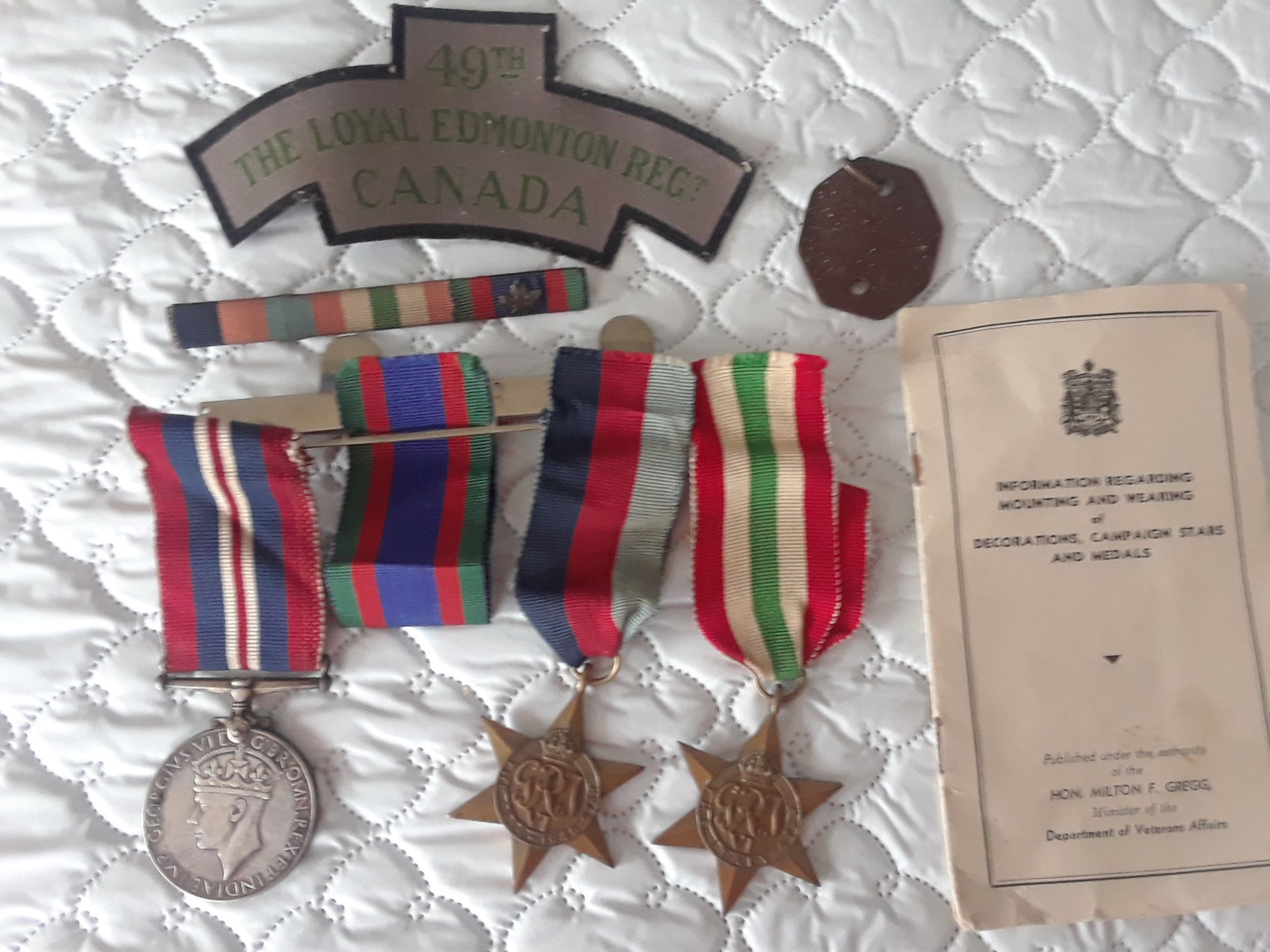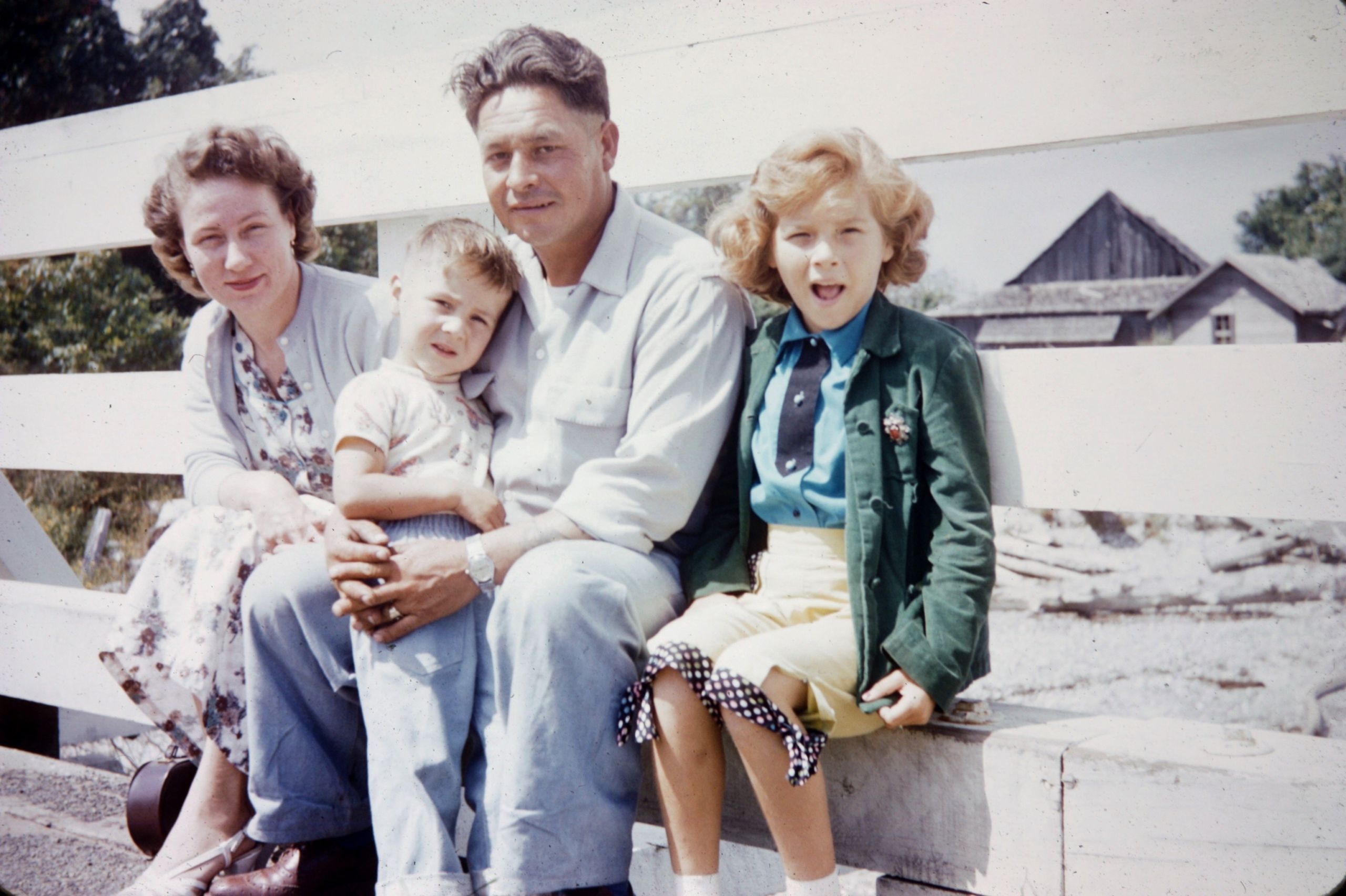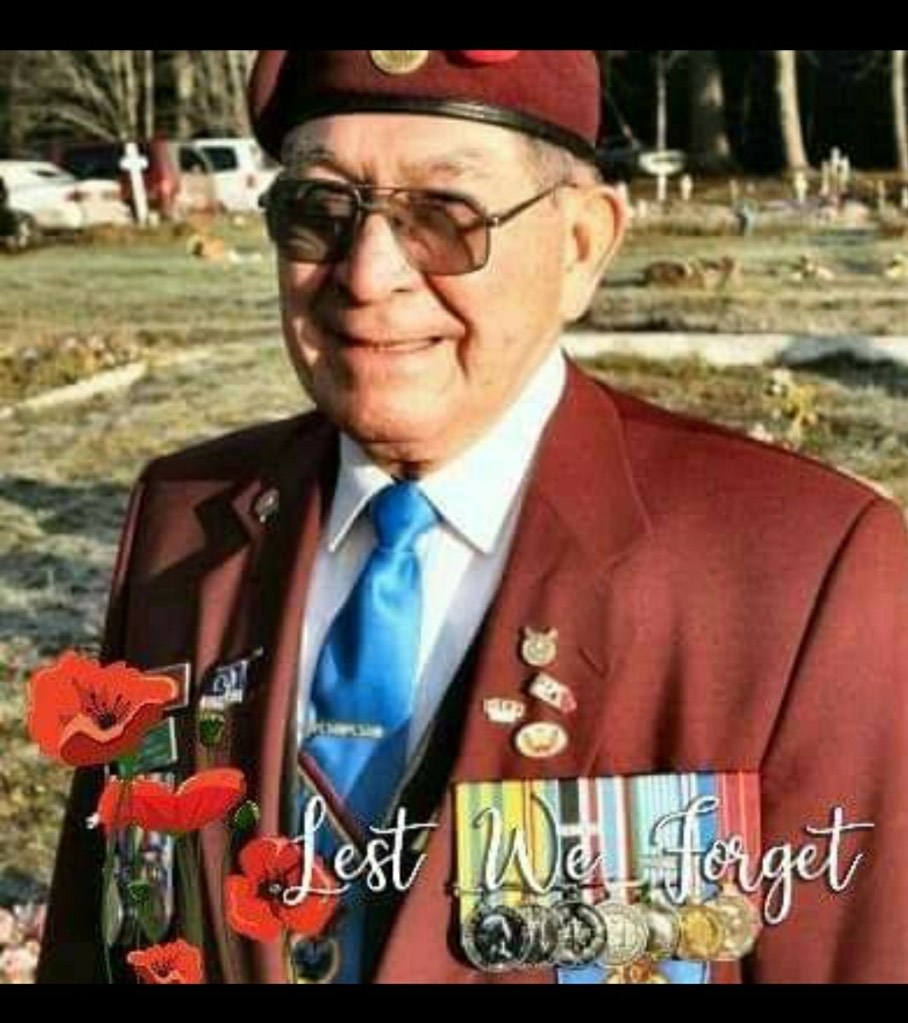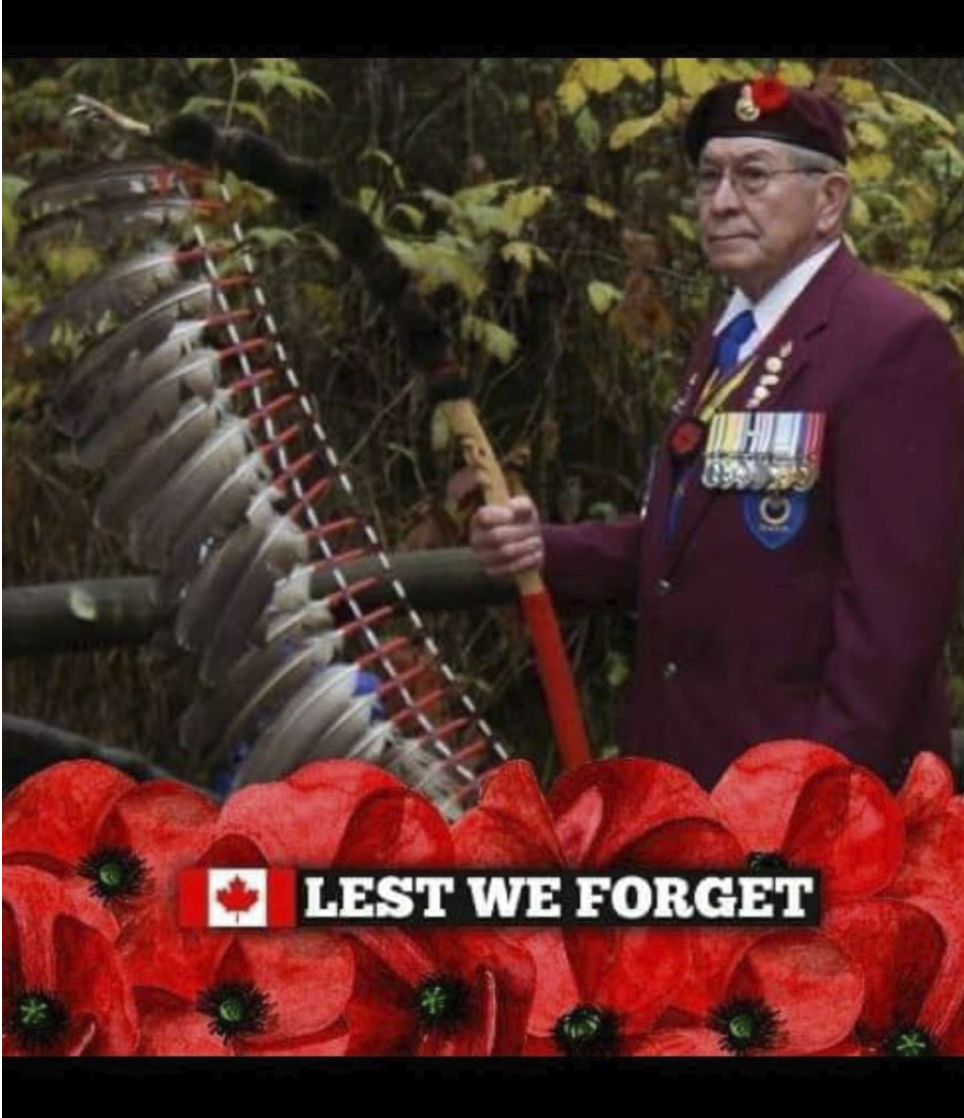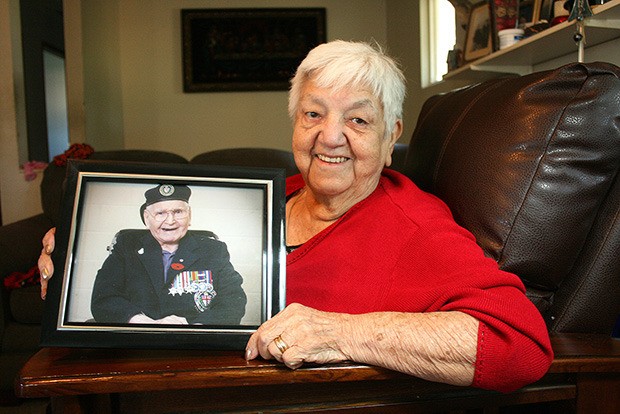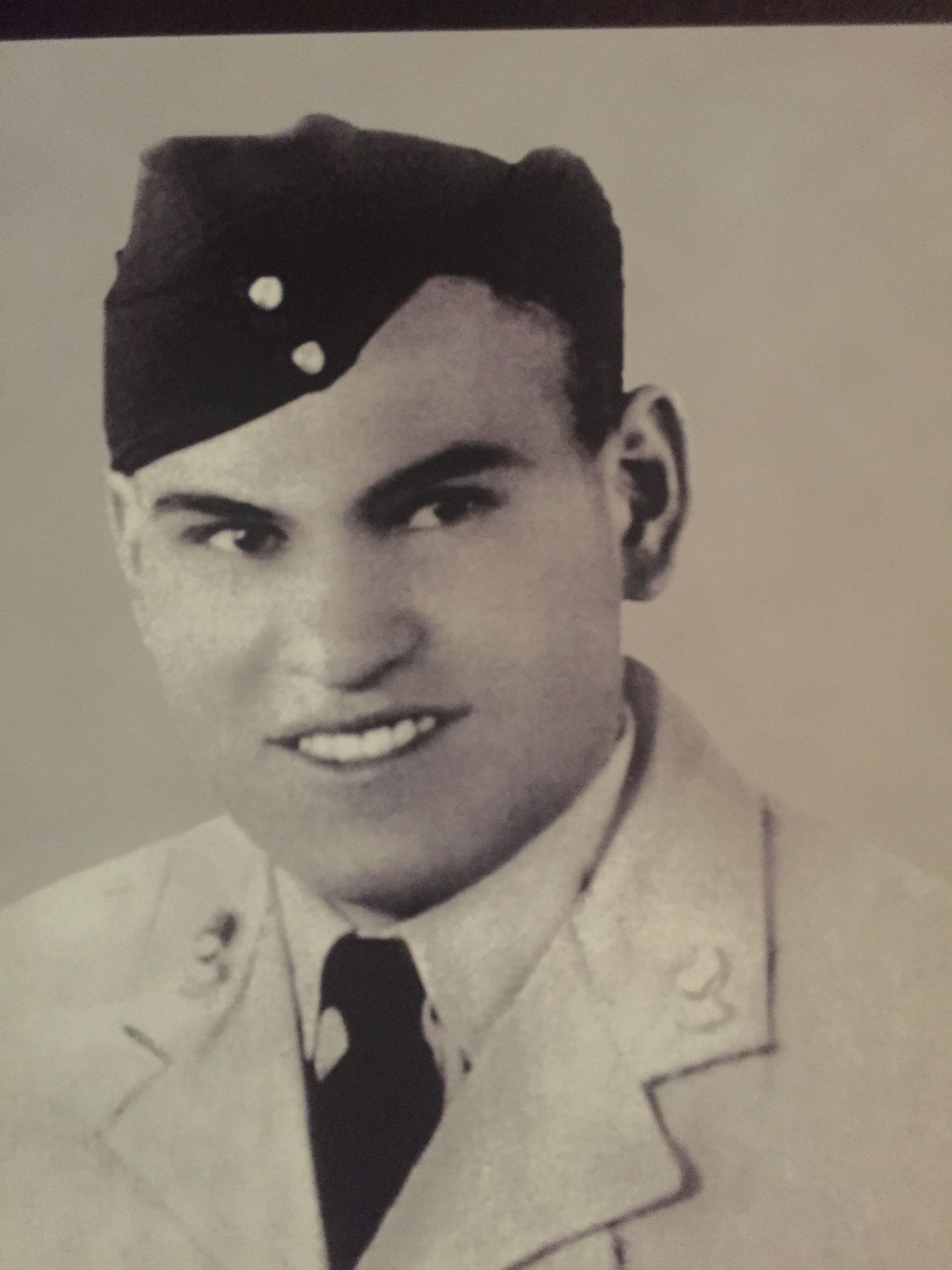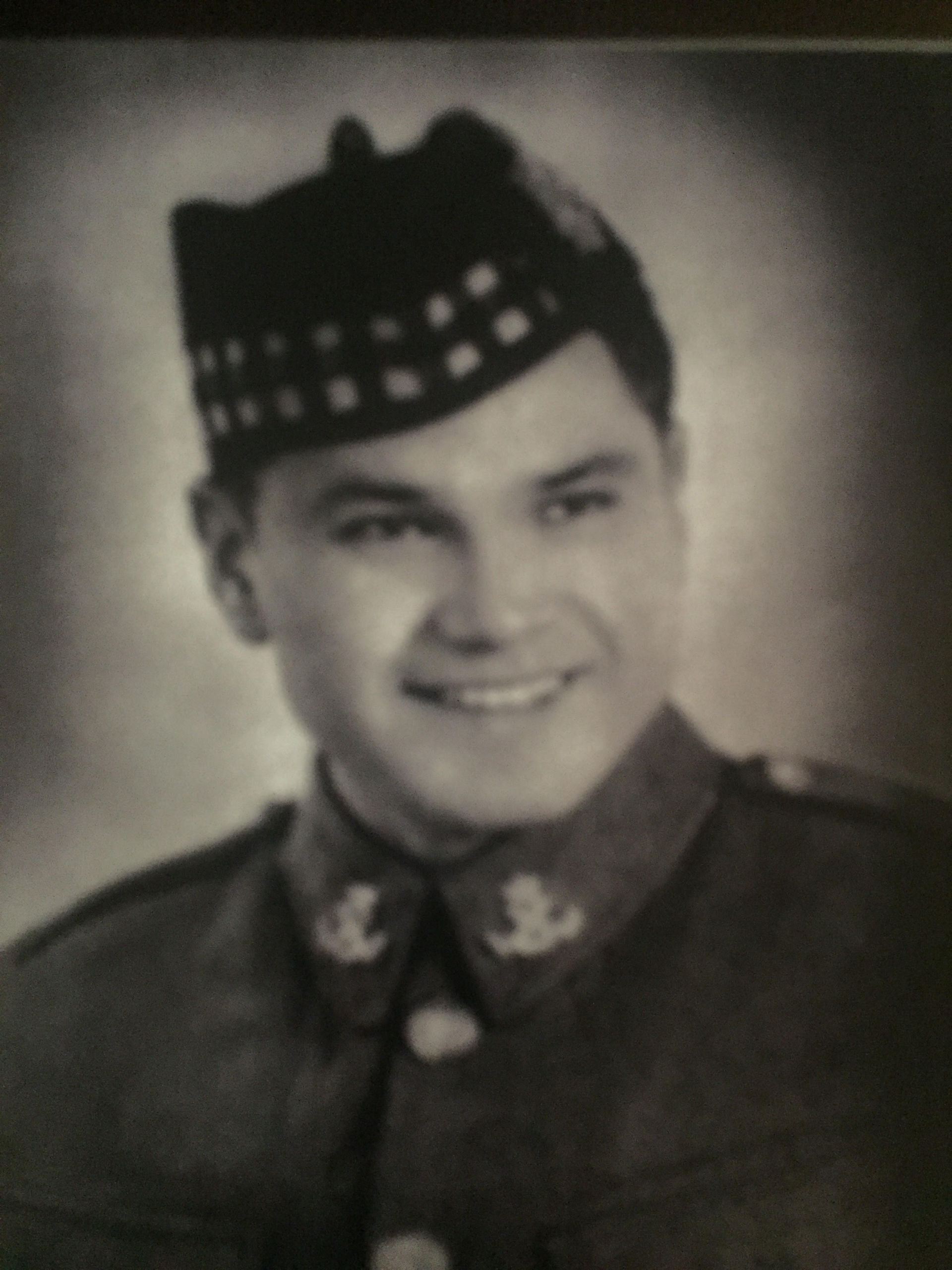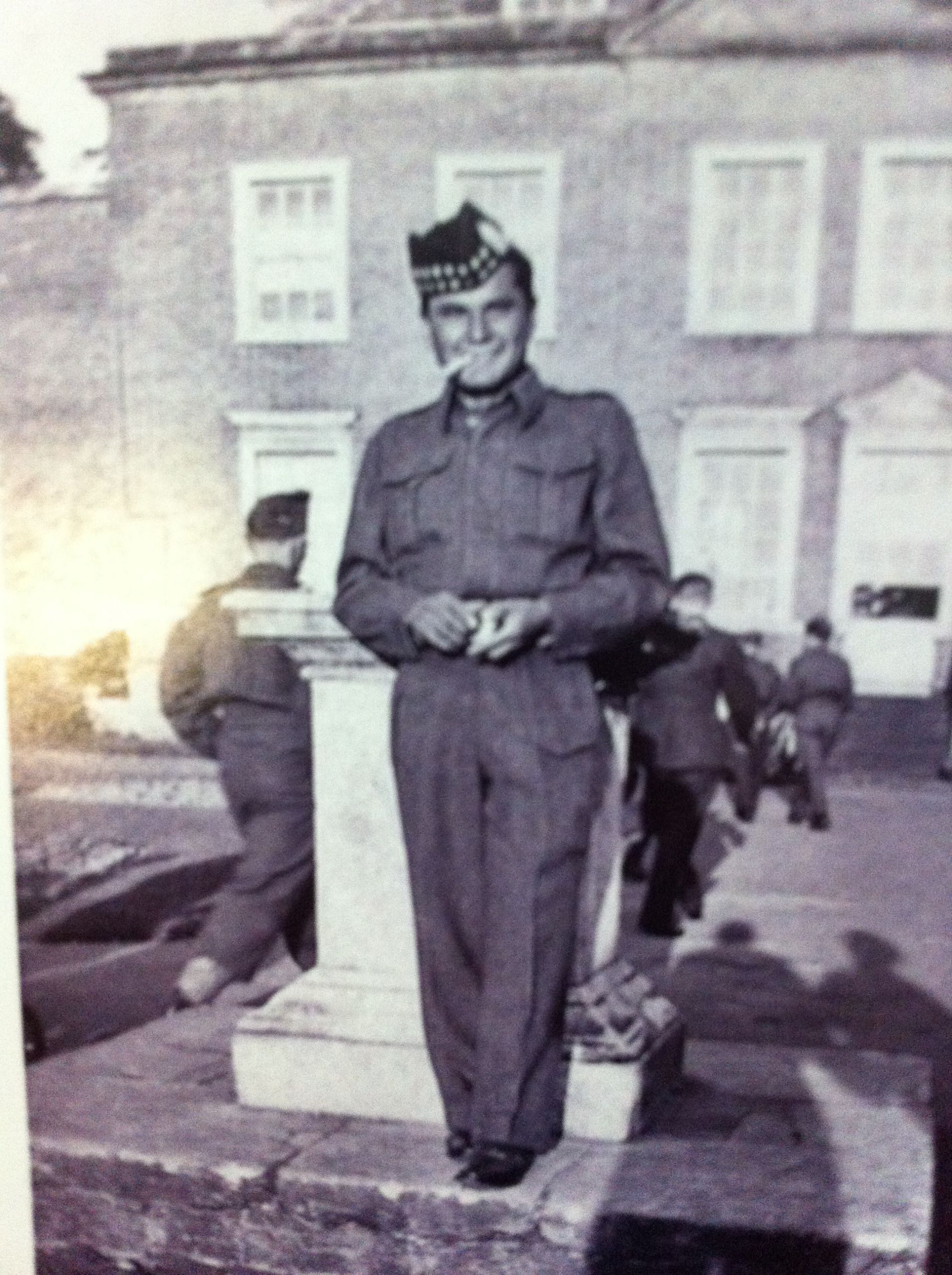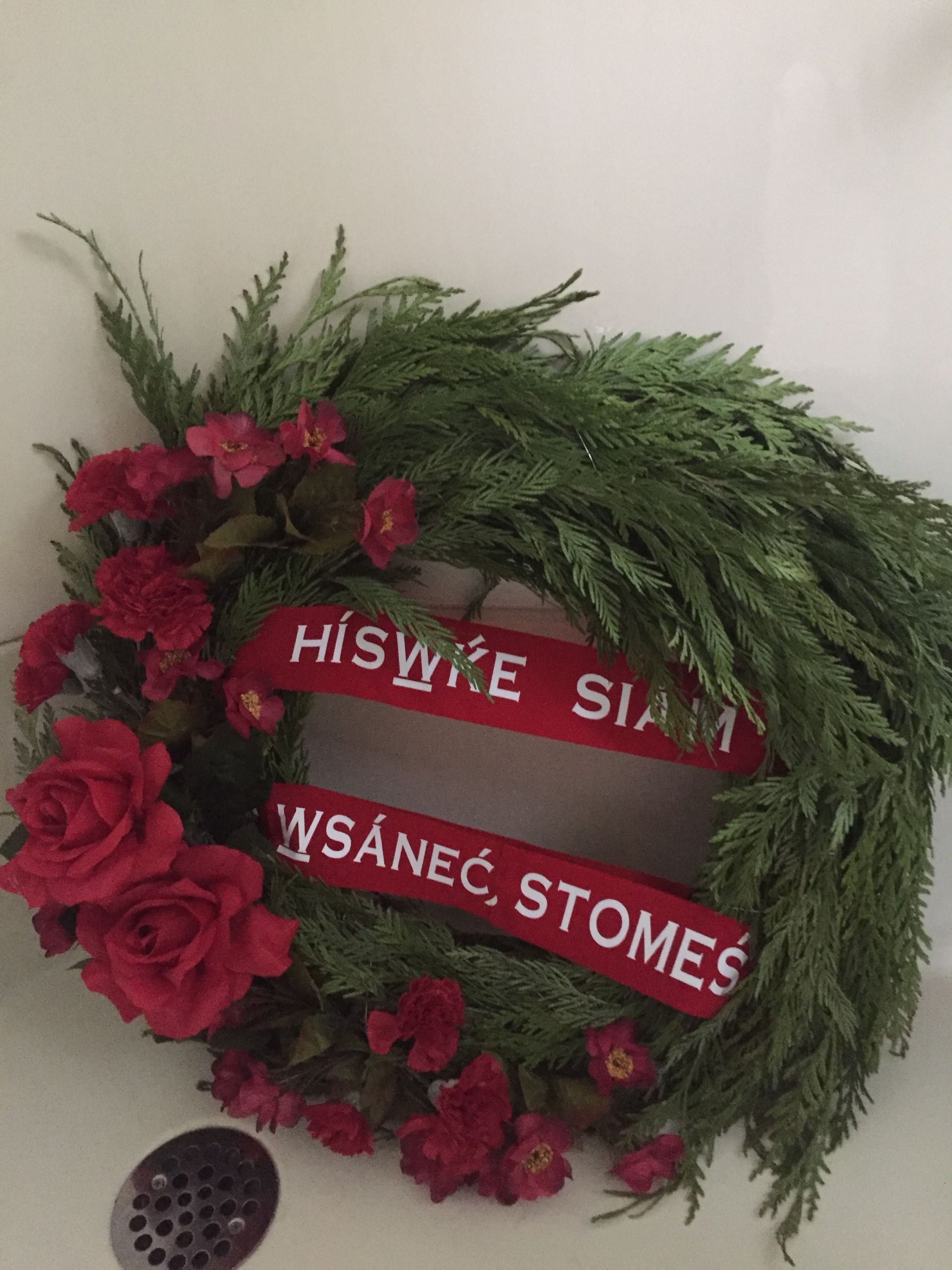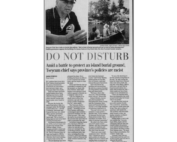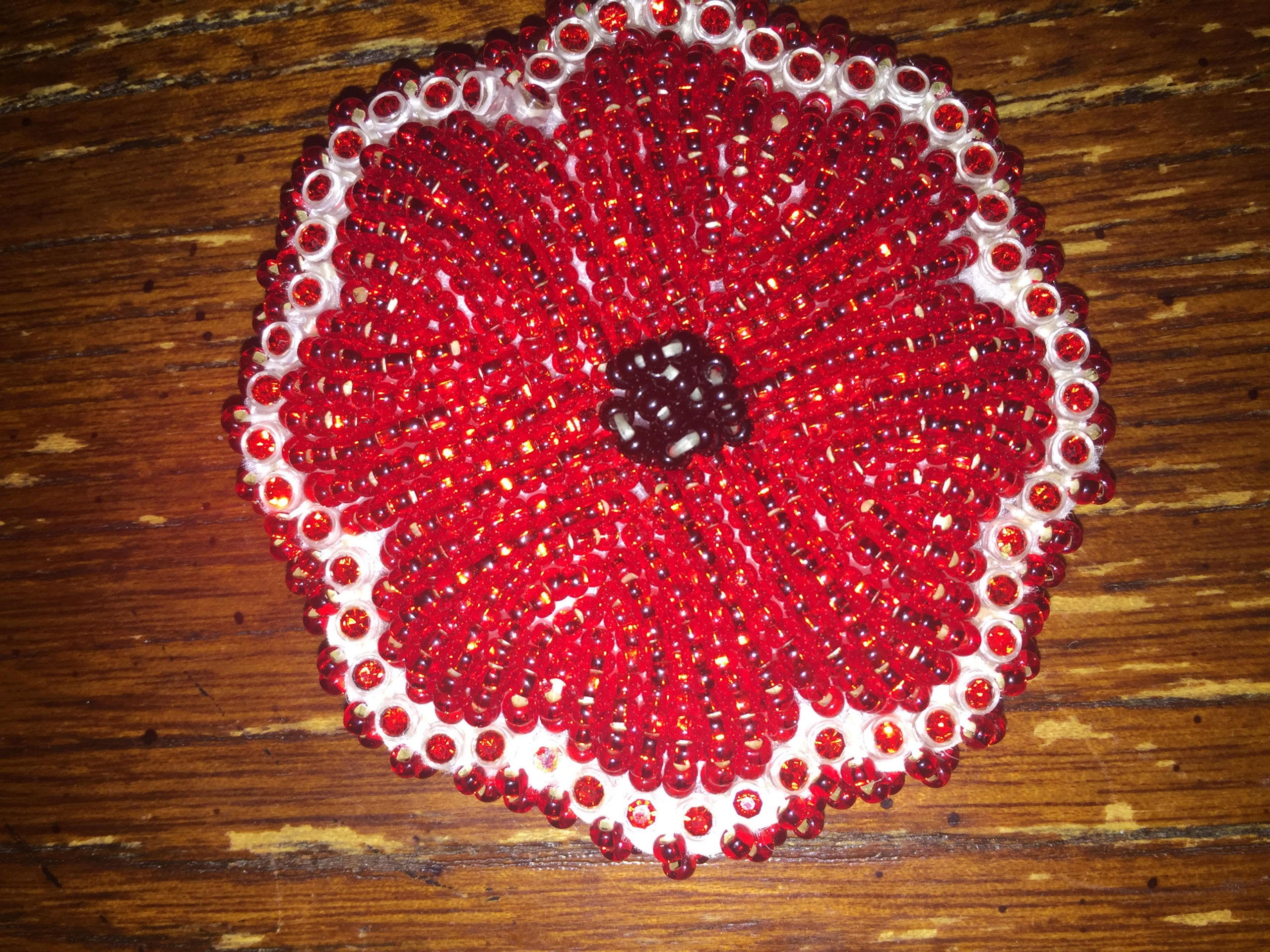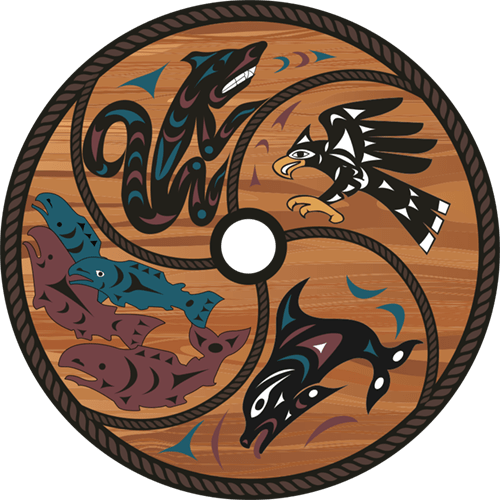A few of the community members that served in World War Two are remembered by their families.
Mary Bartleman:
Mary Bartleman was a private who served in the Canadian Women’s Army Corp from 1939-1945. Stationed in Victoria, BC, Mary did not have to kill anyone. She received the Canadian Volunteer Service Meda for her 5 years of service.
Her niece Pat, holds her Canadian Army Discharge Certificate which shows her war service badge number #293612 and her discharge date in August 1945. Mary Bartleman had enrolled at 18 years old.
“She was a beautiful young lady who lived in Victoria, was a happy person that loved to cook.” Her niece remembers, “She laughed a lot and took really good care of her parents, she would come and spend time and cook for them and clean their whole house for them”.
Vincent James Bartleman
Vincent James Bartleman enlisted at 20 or 21 years of age. After he came out of residential school at 14 years old with a grade four education, he went back to his home in Saanich. In those days, as his daughter Faye Oakes shares, “There wasn’t work for First Nations”. So, Vincent enlisted in 1939 and was sent overseas to Italy and France. He received three medals for his service (shown below).
Faye shares “He would scold me when I asked him about the war. He said ‘Don’t ask me to tell you about killing the 16-year-old boys, that if otherwise, I saw them in the street, I’d take them for a drink”
Faye said, “He was a strong survivor, he didn’t let what he’d been through affect his gentle personality. He was affected though, he’d wake up with nightmares and he had PTSD, although we didn’t call it that at the time. He also came back with a drinking problem like all the men on the front lines did, as they were given whiskey.”
After the war, he got work as a Boom man during the day and at night as a watchman for a logging company. “It wasn’t legal at the time for First Nations to own property, but he pulled an old house out of the woods and onto the property, from that he built our home on the logging company land.”
Vincent was a kind and gentle man and very athletic. There were several rumours about him, one that if he kicked a soccer ball that it would explode, the other that if he punched you in the face, he could be behind you and kick you in the behind before you’d finished blinking. He even had a nickname, Punch. Faye’s husband, Rick remembers. “I was the top runner in my school and Vincent beat me, even when he was 40 years old!”
“My dad was a great Dad, he was either working or spending time with his family,” Faye recalls. “Every day after dinner he’d take us to play softball. After four years he enrolled us in softball and everyone was surprised we could play, but we’d been practicing with him for years. He coached both our softball teams and was well-loved. There’s a lot of my cousins, kids named after him as he was so generous. He’d give all the kids 25 cent and 50 cent pieces when he came back to Saanich from working in Sooke.”
Vincent James Bartleman and his family.
Herman Henry:
Herman Henry was a celebrated war vet from Pauquachin that was deployed right on the front lines in Belgium, France and Germany. “He was all over Europe” his daughter Lila shares. Herman Henry was underage when he enlisted and he was gone for years.
We spoke with Lila and Bea, two of his four daughters that shared with us how their father taught them to be strong and proud and to stand for the national anthem. “He told us you don’t know the feeling of fighting for our country and then winning.”
Lila continues, “He had a hard life. He had PTSD but of course, he wasn’t diagnosed. In those days we didn’t talk about these things. He didn’t talk about it much, the death, the friends he lost. Remembrance Day is a hard day for vets. Our whole family remembers Veterans and Veterans day because of our values, out of respect.
In 2013 a video was made called A Different War, Remembering Herman Henry, that shares more of his story as well as interviews with his two sons.
Leonard “Fox” Harry Desjarlais was originally from Foxhorn, Manitoba of the Saulteaux First Nation. He enlisted at 18 years old to grow as a person and see the world. He spent from 1950-1953 in Korea and then when he returned back to Canada after the war, married Dolly from Tsartlip First Nation. They had three sons and one daughter during their 54 years of marriage before his passing on July 11, 2012. His descendants include 5 grandchildren and 2 great-grandchildren.
Dolly remembers Leonard was a hard worker, a family man and very involved in the community. After the war, he worked at Saanich Municipal Hall doing maintenance. “He could fix anything. He was Mr. Fix It. ” Dolly recalls. Leonard also worked as a supervisor at James Island Dynamite Plant.
Beyond work, he was very involved in supporting the community. He was a volunteer Firefighter for Central Saanich, an active member of the Korea Veterans Association and the Legion. He would lead the Grand Entry of the Pow Wow on July 1st each year and be in the parade as well. For him, “Remembrance Day was a day of pride” his son Michael shares. “I remember writing a short story as a youth about him polishing his shoes. It was very important to him that his shoes be polished, his uniform was clean and pressed and that he was on time for any events. On Remembrance Day he really beamed. It was such an honour for him to serve and it was the one day he was recognized.”
Leonard really loved paddling his canoe and was also known as a talented hunter and fisherman. “I remember a man shared at his funeral that Leonard taught him how to hunt, so he could feed his family, and without that, they wouldn’t have survived.” His niece Mavis remembers. “Even though he lost his Metis Identity and wasn’t recognized in the reserve system here, he never begrudged anyone anything. He was a great man, very empowered and supportive of his wife and family, an advocate and spokesperson for vets and a very kind and accepting man.”
“There’s one picture he’s really proud of, of him holding the staff. It’s important because it represents both the military and Native.” his son Michael shares. Leonard received many medals, but they’ve since been donated to a museum in Ottawa.
A photo of George Underwood as shown by his wife Geraldine.
George Underwood, born December 26, 1924 and passed away May 3, 2014, served in the Princess Patricia Light Infantry in World War 2 in the final battles in Italy, he was a runner, supporting soldiers on the front lines. He enlisted because he wanted to defend the land and against tyranny. He didn’t want to kill anyone and he said he never did.
No one was hiring First Nations people, and his brother’s enlisted so he did too. He thought they would be doing it together but that’s not what happened.
George and his two brothers were separated and he was shipped overseas where he was shot three times, breaking his shoulder, leaving him with shrapnel, grazing his chest and landing him in hospital in Italy.
While there he learned Italian and when he returned home he could pass for Italian, which was good for when he wanted to buy alcohol because “Indians weren’t supposed to be drinking and would be thrown in jail” Mavis remembers “It was how things were at the time. He hated that he wasn’t treated with the respect of a veteran when he came home, due to all the racism”
George was a successful hunter and fisherman and the kids in Grade 5, have him included in the curriculum as a hero. “I think it’s just a great program” Mavis shares. “There were a lot of Pauquichan women who served too, not just as nurses but attendants”
Ben Underwood.
George’s brother Ben Underwood served with the Royal Engineers in Victoria, working on highways and roadways and ensuring supplies got to the soldiers.
Ed Underwood
Ed Underwood was a distinguished member of the Canadian Scottish Light Infantry. He survived World War Two but died of tuberculosis while waiting to go to officer’s training. He is buried in Holyen Canadian Cemetery in Amsterdam.
“Ed Underwood was very athletic, a bodybuilder that could have become a professional diver,” his niece Mavis shares. “He was diving off the high diving boards with Olympians, but there weren’t a lot of opportunities for First Nations back then. Ed was a Residential School Survivor.”
This wreath made by Virginia Joseph of TSawout and will be laid at the Central Saanich Ceremony in Brentwood Bay
Art by Doug LaFontaine to commemorate W̱SÁNEĆ war vets
RECENT POSTS
How are we doing?
A poppy beaded by Brenda Morris.




